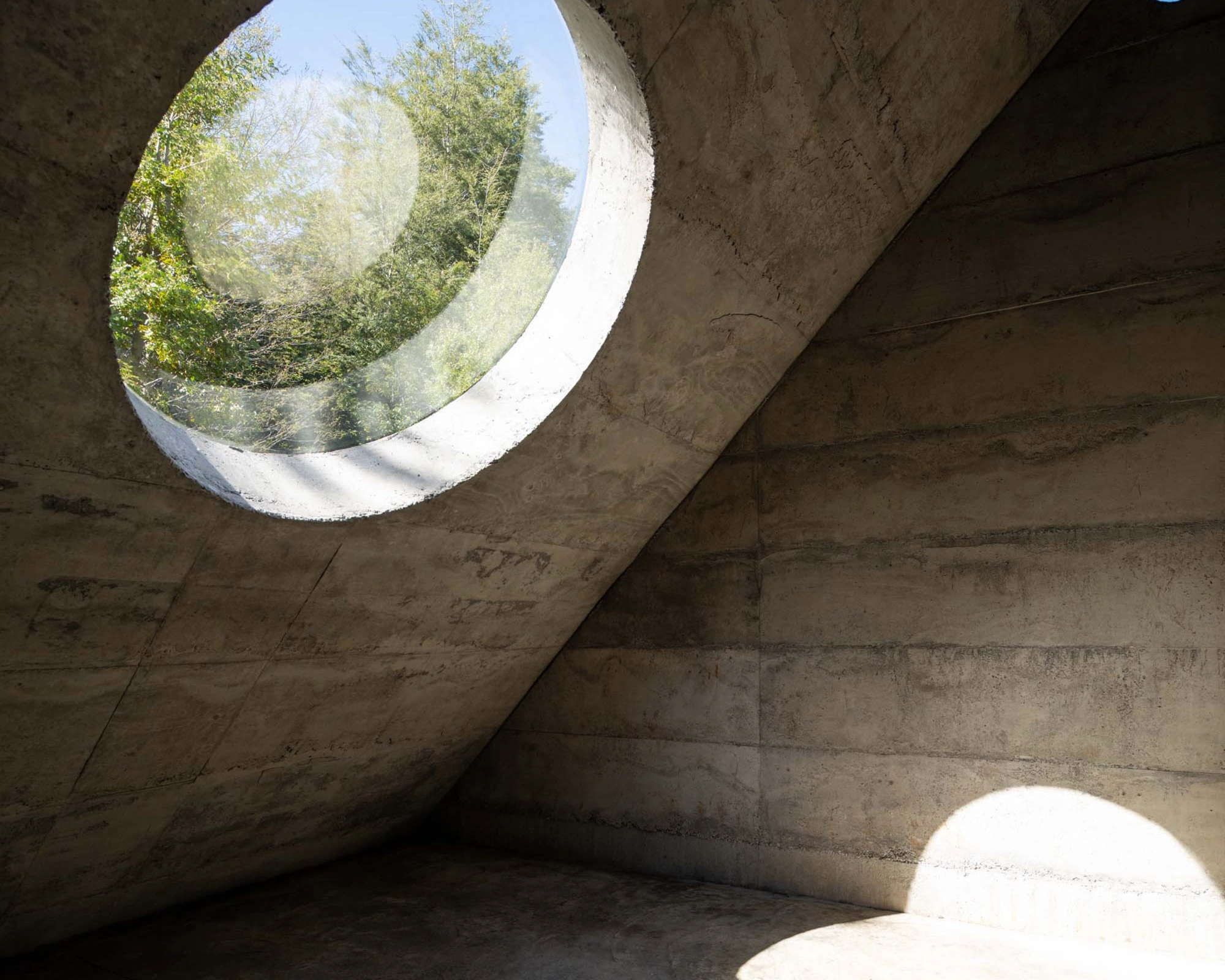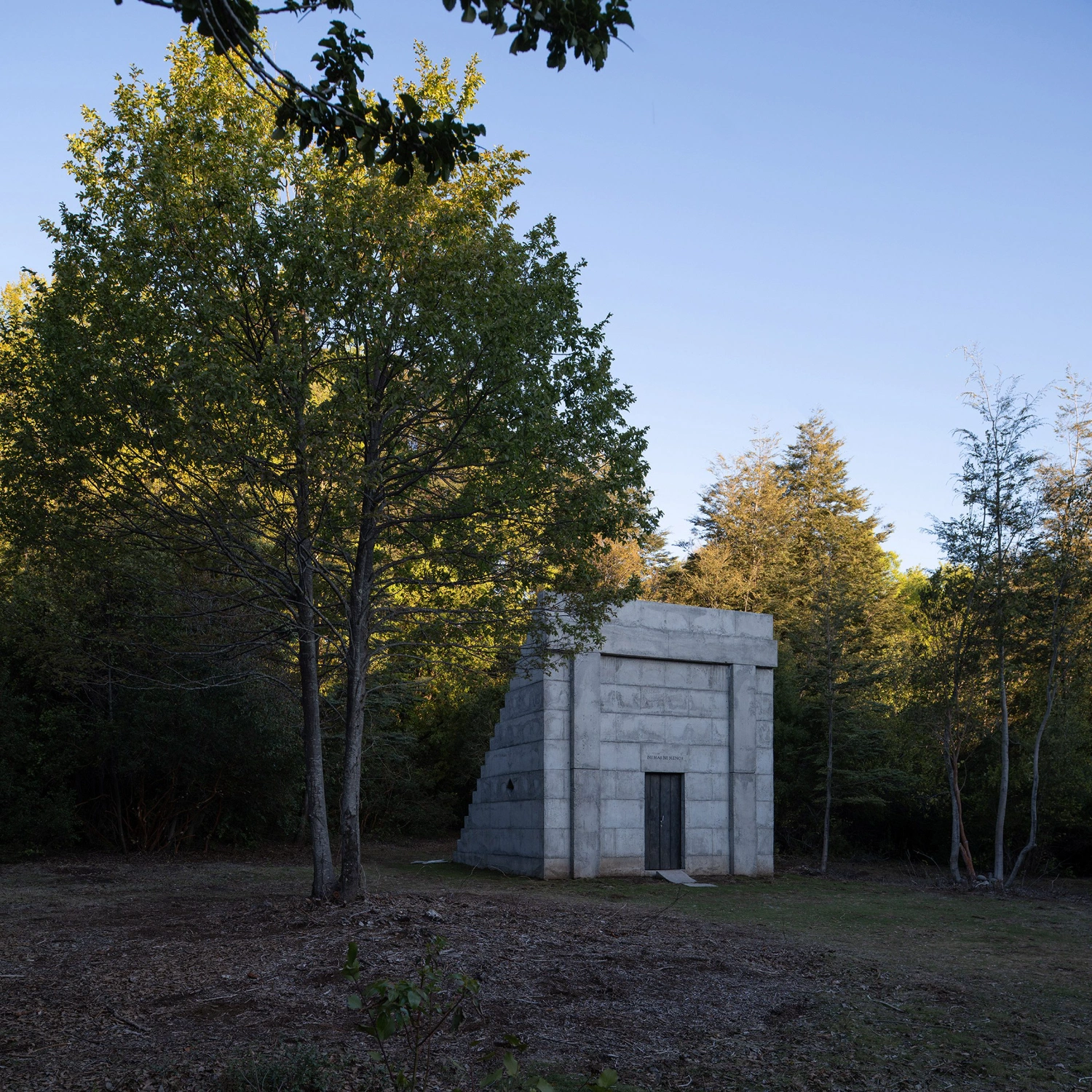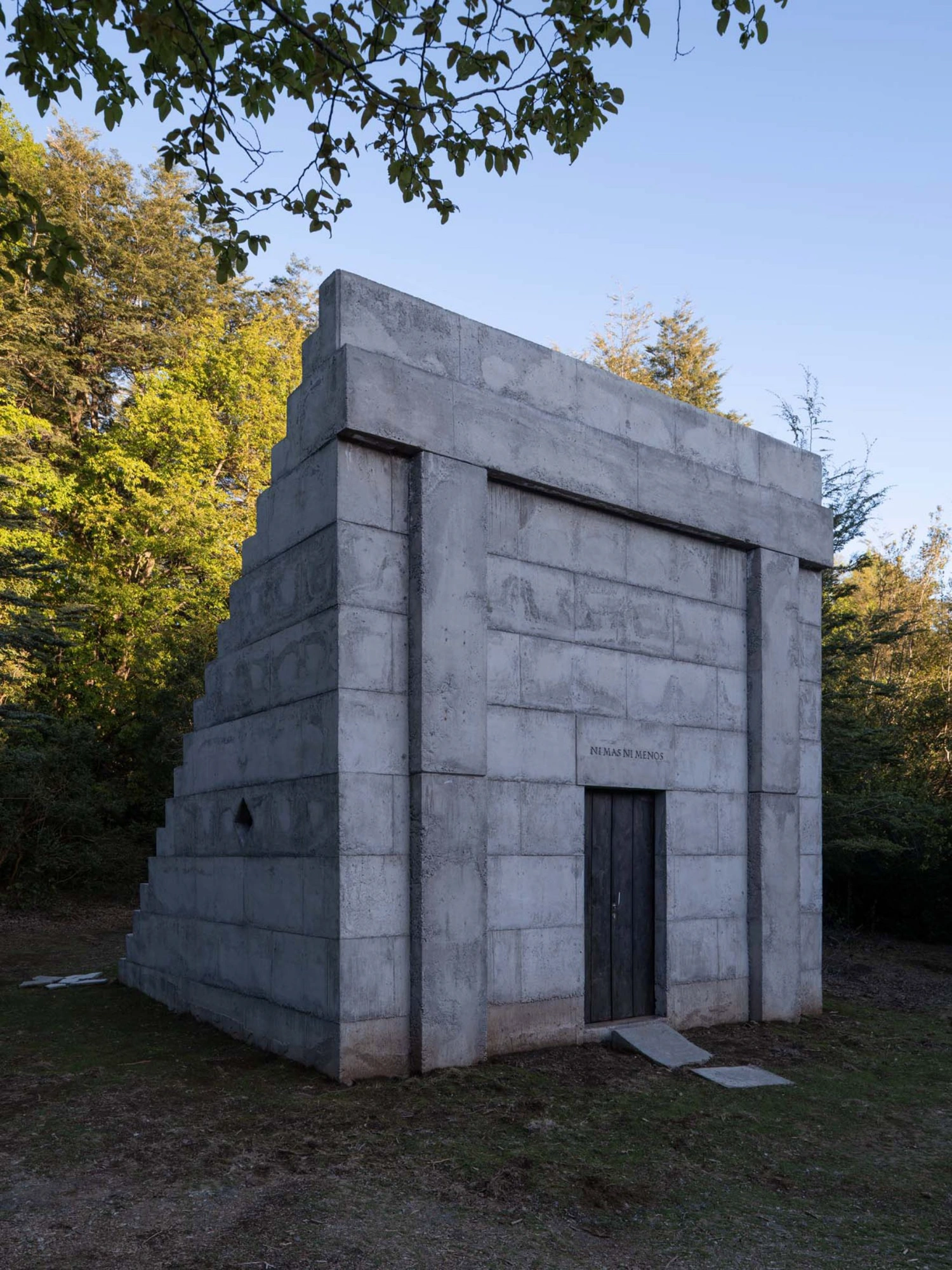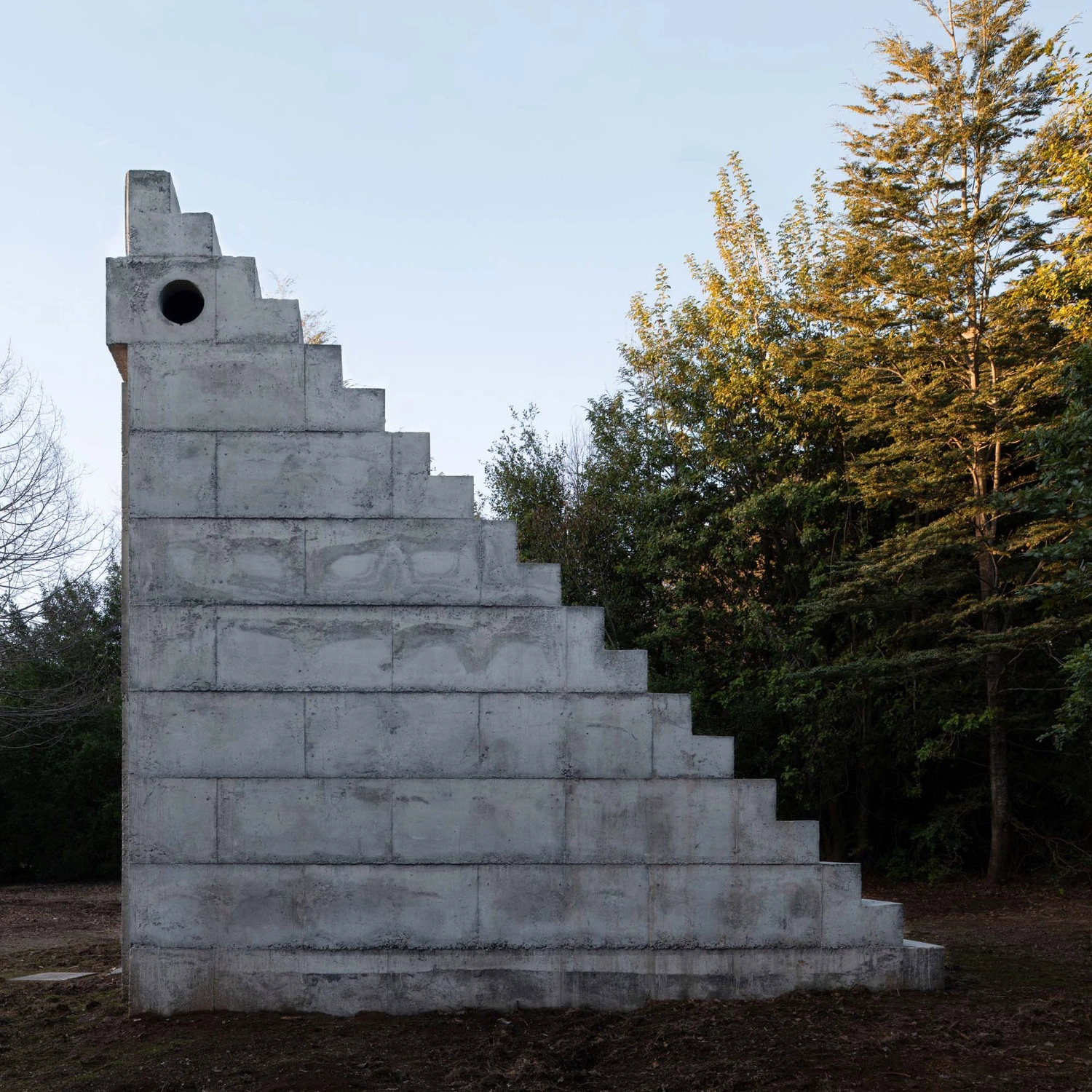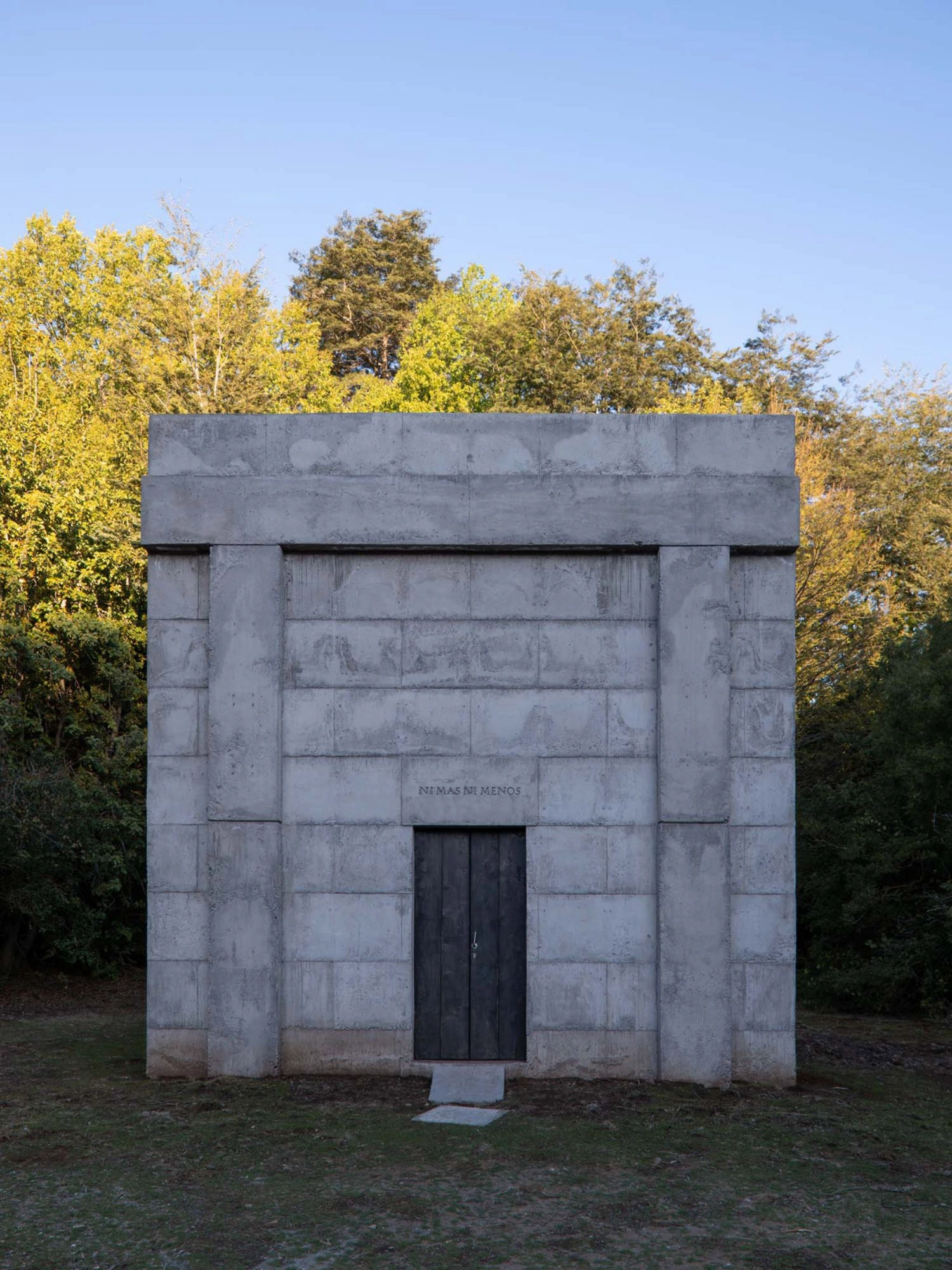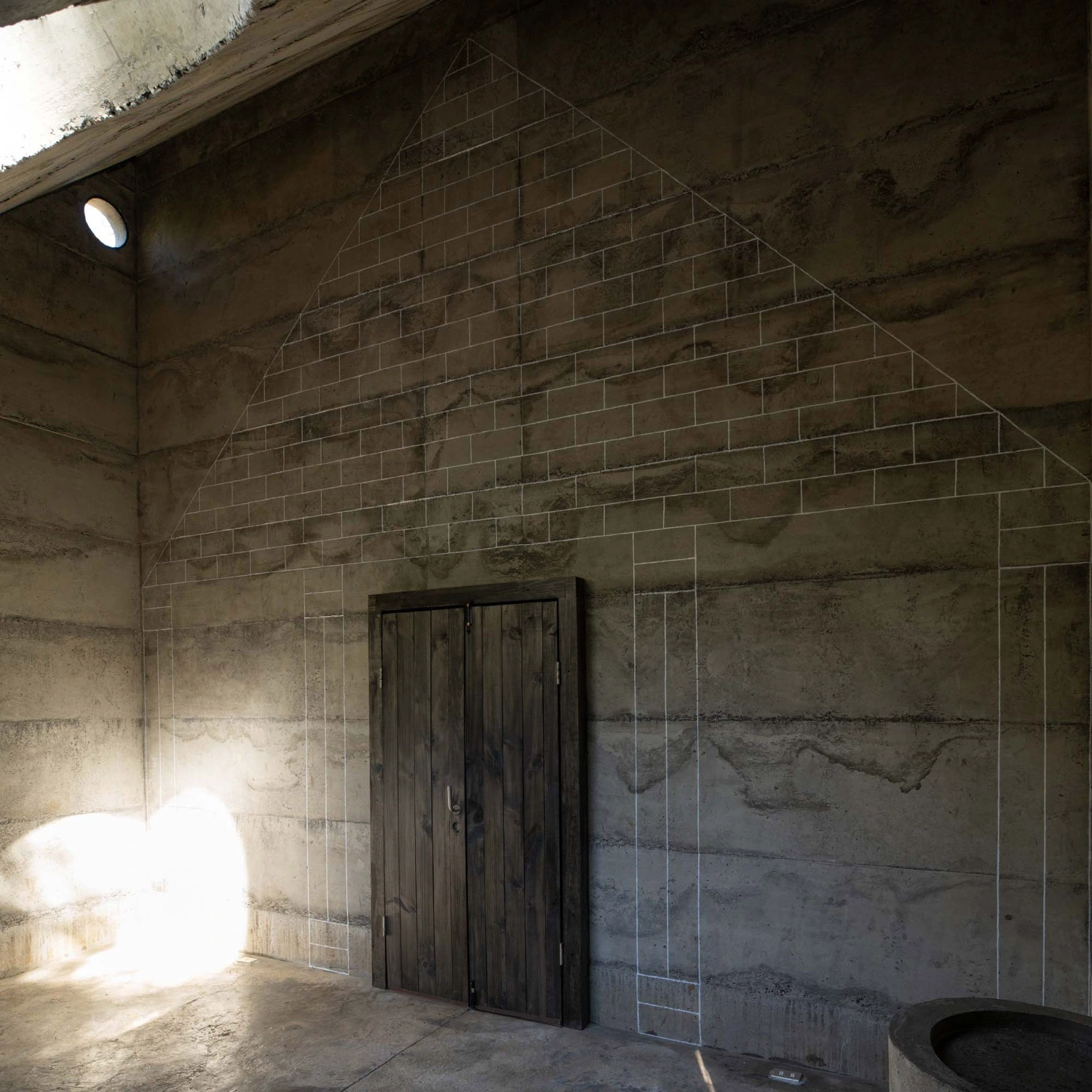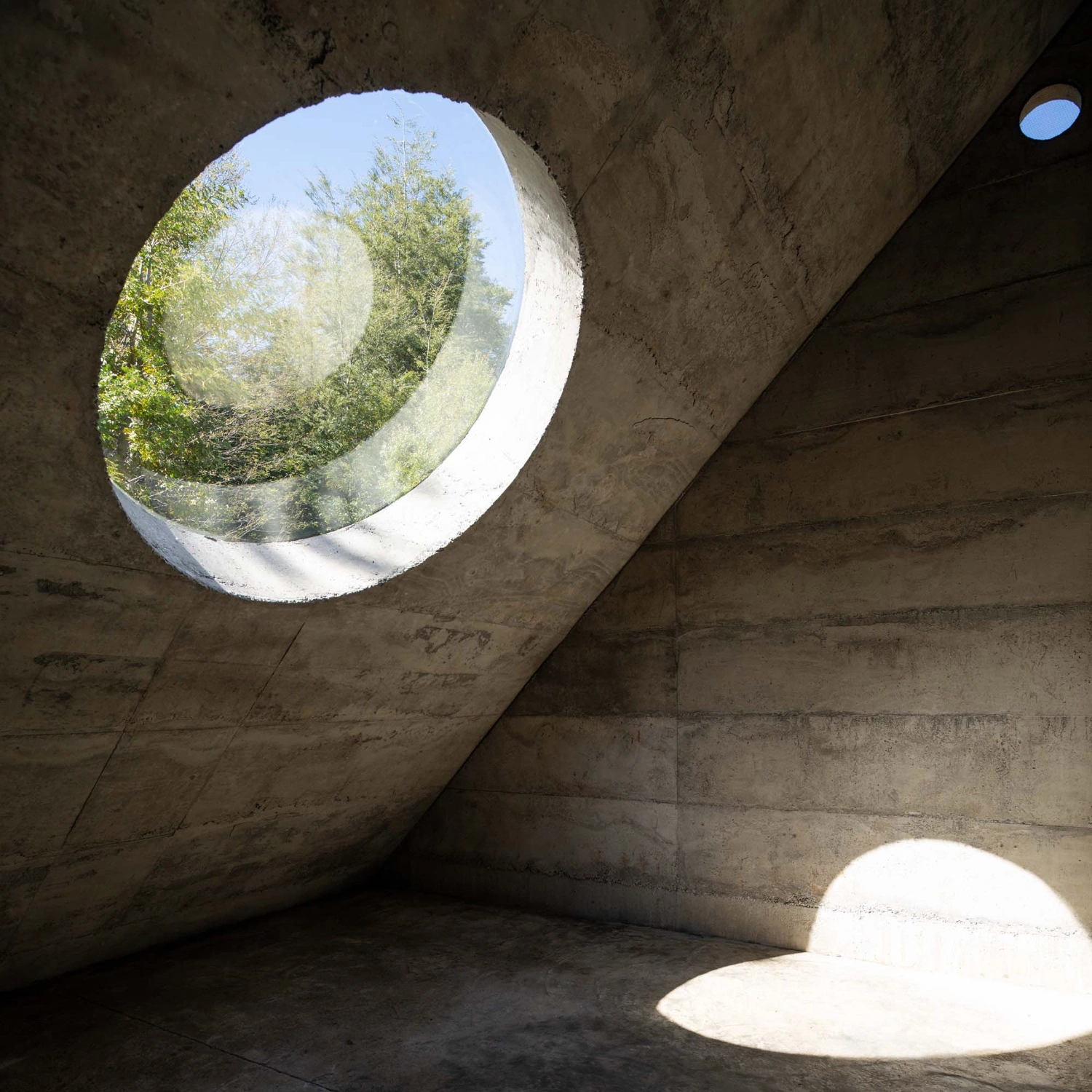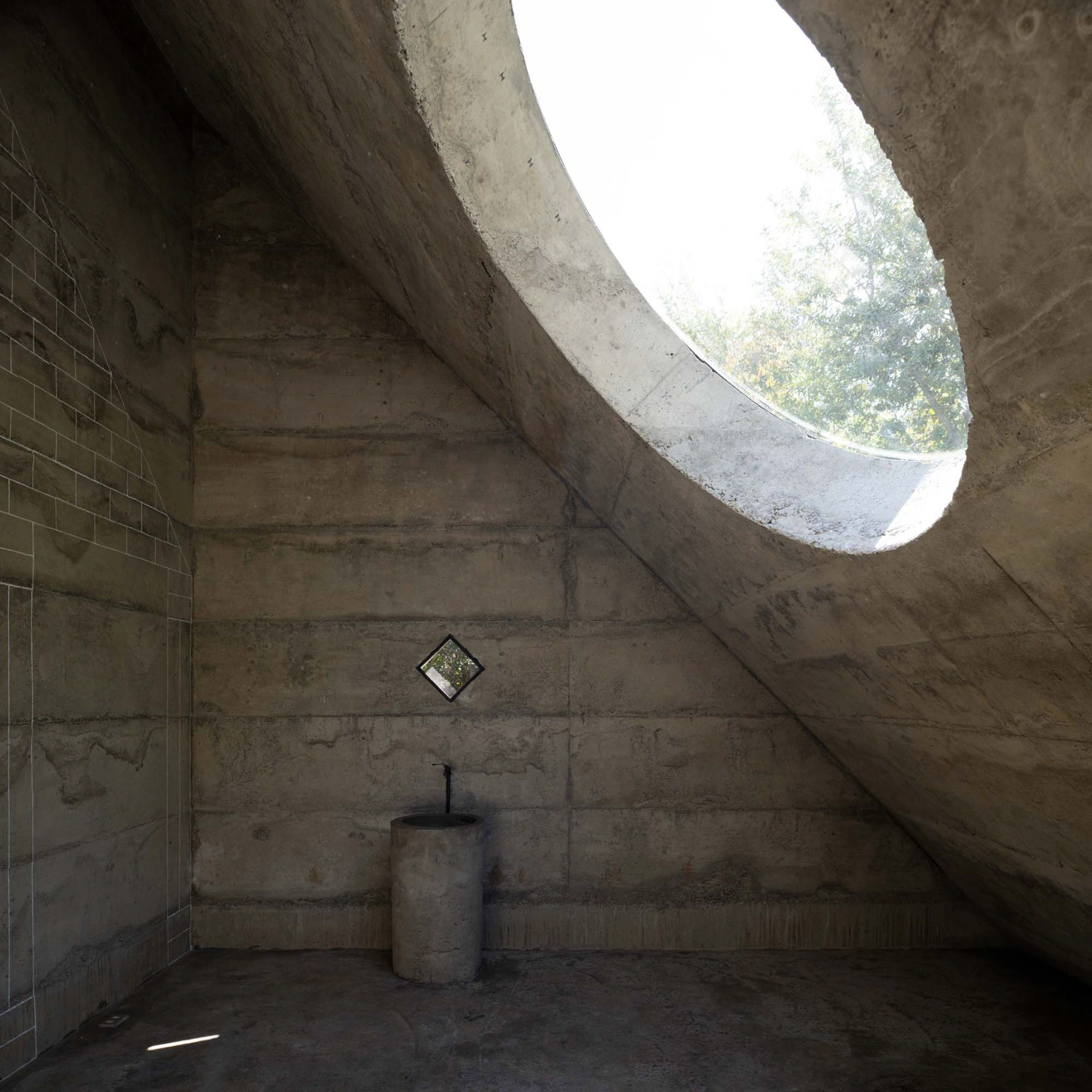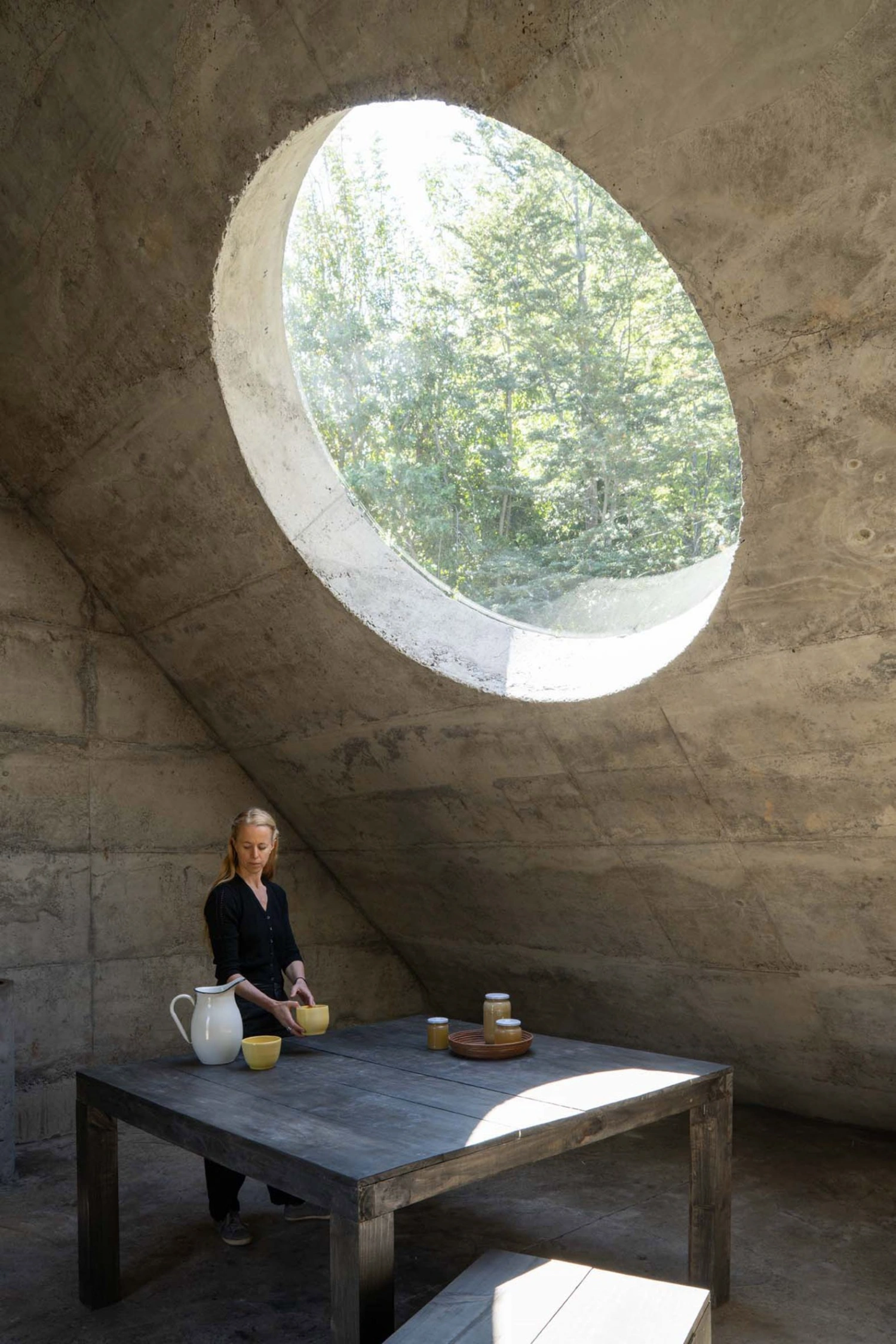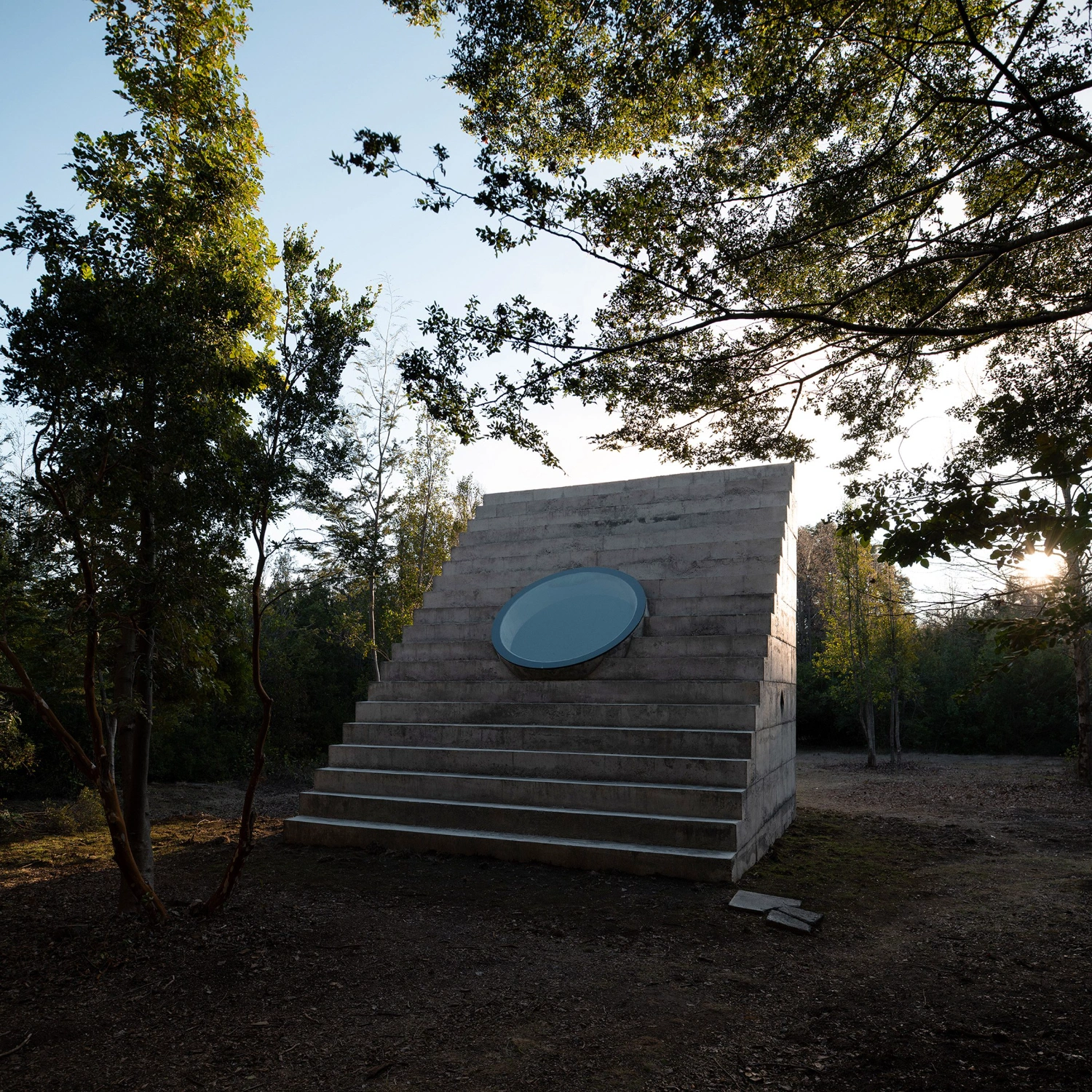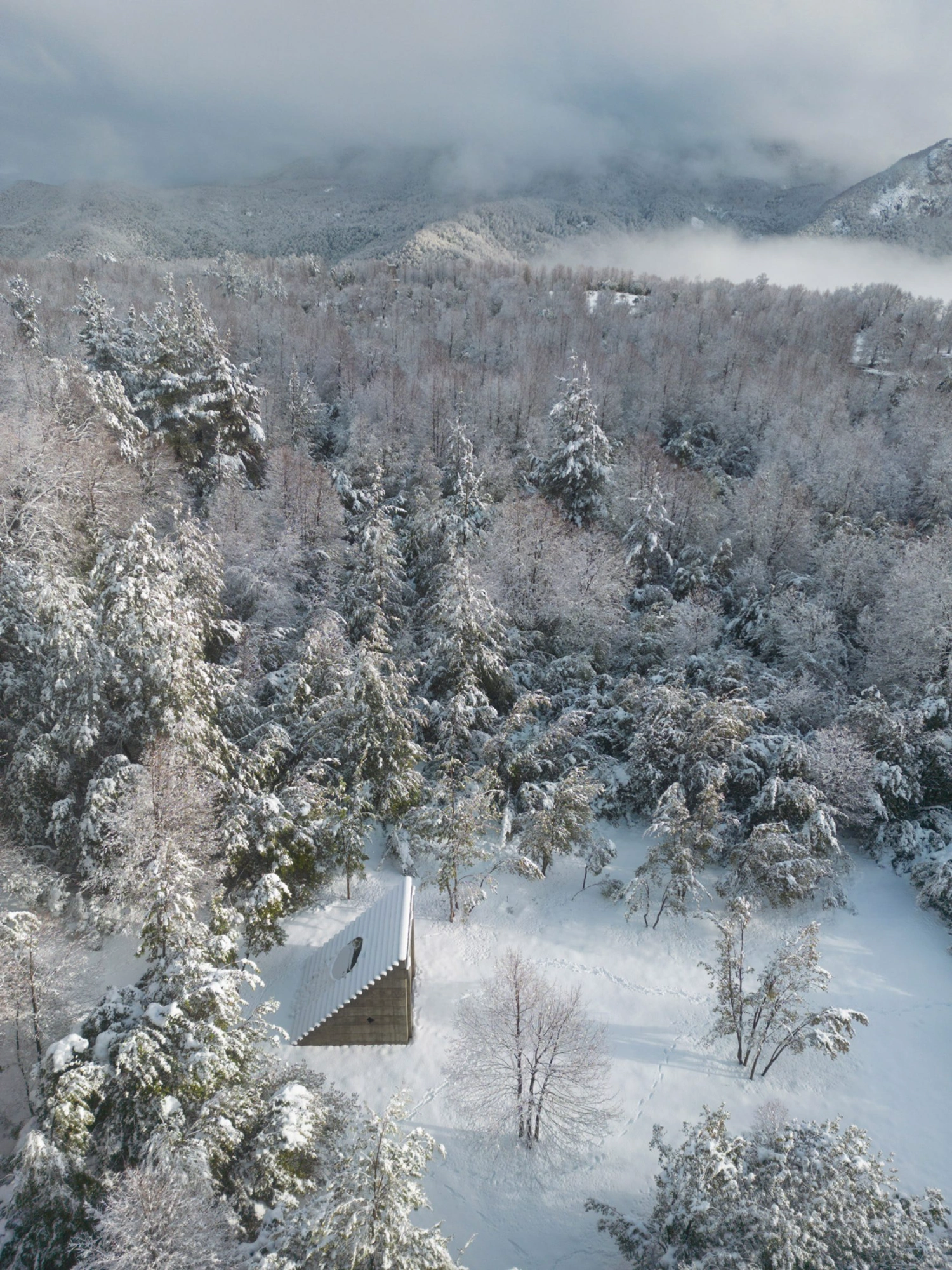A compact concrete pavilion in rural Chile where Pezo von Ellrichshausen turn a modest honey workshop into a quiet study of light, weight and time.
Set at the edge of a dark stand of Coihue trees, MIEL Pavilion designed by Pezo von Ellrichshausenis both building and measure. Its plan is concentrated and almost directionless, a dense footprint that feels as if it has been gently rotated against the slope. One side rises to the suggestion of an invisible cube; the opposite side disappears into the ground, so that the project sits somewhere between plinth, retaining wall and room.
From a distance the pavilion registers as a blunt block of cast concrete, a small monument resting in the grass. Up close the surface reveals the imprint of the formwork, crossed by pale lines that soften its mass. This thinness is part of the building’s ambiguity: the main wall reads like an altarpiece, a plane of quiet frontality that holds structure, inscription and a hint of narrative.
Inside, a single diagonal volume dissolves the usual distinction between wall and ceiling. A large circular opening slices through the concrete and frames the surrounding foliage, pulling the forest in while cutting the sky into a precise disc. Light drops onto the floor in shifting ellipses, turning the interior into a slow, moving instrument that records the passing day.
The space is not intended as a lookout or a retreat, but as a place of work. Within this compressed geometry, a modest production of honey is processed. The equipment is minimal, yet the room carries the gravity of a small temple: a space where repetition, care and time give meaning to an otherwise ordinary activity.
As the trees continue to grow, the building will seem to shrink further into its clearing. What is now a clear object in the landscape will become a mute, half-hidden infrastructure for an ecosystem of bees, plants and people. In that sense MIEL Pavilion is less a finished form than a patient arrangement of concrete, light and vegetation waiting to be completed by the forest.

